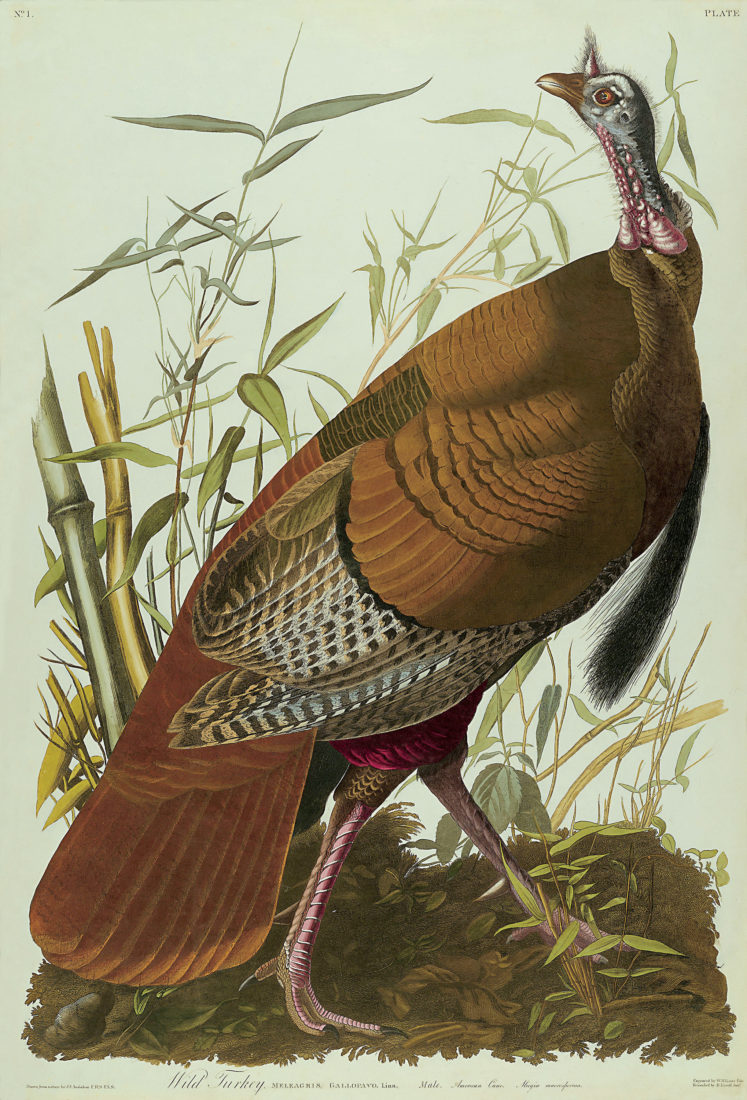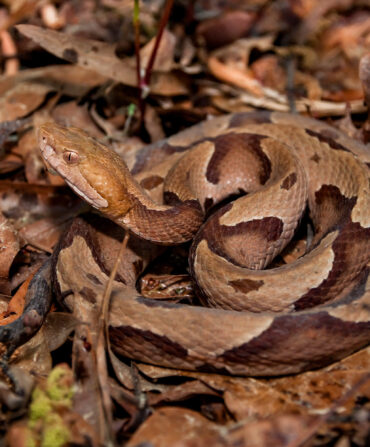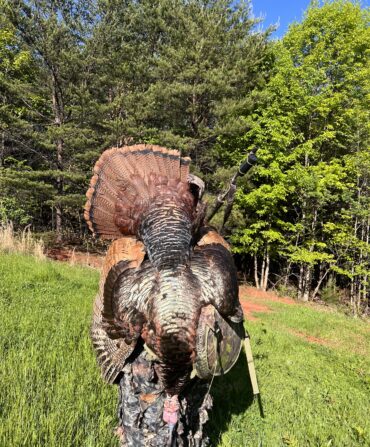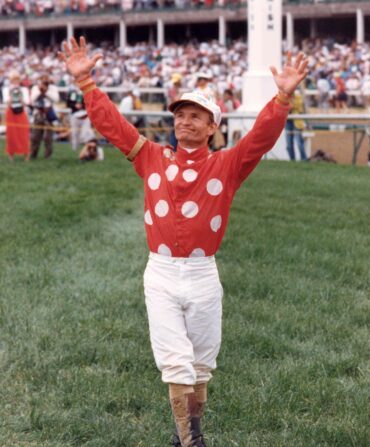The art of wild turkey hunting is the art of misdirection, but, then again, most art does that — deals in camouflage and commitment. And Duff Holbrook is the master in both. In the months leading up to the spring turkey season, he’s often in the woods scouting for signs, and on opening day he’ll get his turkey. But only one. You’re allowed two a day, but only five for the year, and he’ll be spacing those out. No, he’s not going to shoot a turkey every time, but he’ll have his five soon enough, and then he’ll spend the remainder of the season still waking before “newspaper sunrise” and entering the woods. Calling up turkeys is sport enough, and, as Duff would have it, more than half the fun. Duff is eighty-three, and he’s been hunting wild turkeys for a long, long time.
And an even longer time ago, my father, William P. Baldwin, Jr., was a wildlife biologist here in the Southeast and ran one of the earliest wild turkey restocking projects. He took a handful of turkeys from South Carolina’s Francis Marion Forest and released them onto nearby Bull’s Island, at Cape Romain Wildlife Refuge. Except for a few small coastal pockets, the turkey was gone from the state, and the federal government had high hopes for this project. But my father’s effort turned into a dismal, twelve-year-long tar baby. The exceptional tick population of the island literally ate his birds alive, and no amount of work and worry could make it otherwise. “Duff Holbrook,” he would say, “he started trapping in the Francis Marion in 1948 and spreading the turkeys around the state. From the midlands up, if you see a wild turkey, Duff put it there.”
So even before Duff Holbrook retired from government service in 1983 and returned to South Carolina to care for private forest in our McClellanville area, I’d heard his name, and after that I’d bump into him in a restaurant or at a community gathering. I watched him grow a bit bent, and saw the plentiful lines on his face deepen — lines he credits to the bumps and bruises of a busy life, but a fair number of them are smile lines and the product of an unstoppable optimism. Even today, he and his wife Eleanor strike me as eternally young. Four children with successful careers, grandchildren to visit, and who visit them, and the outdoors to enjoy all make for an excellent second retirement and even more smiles.
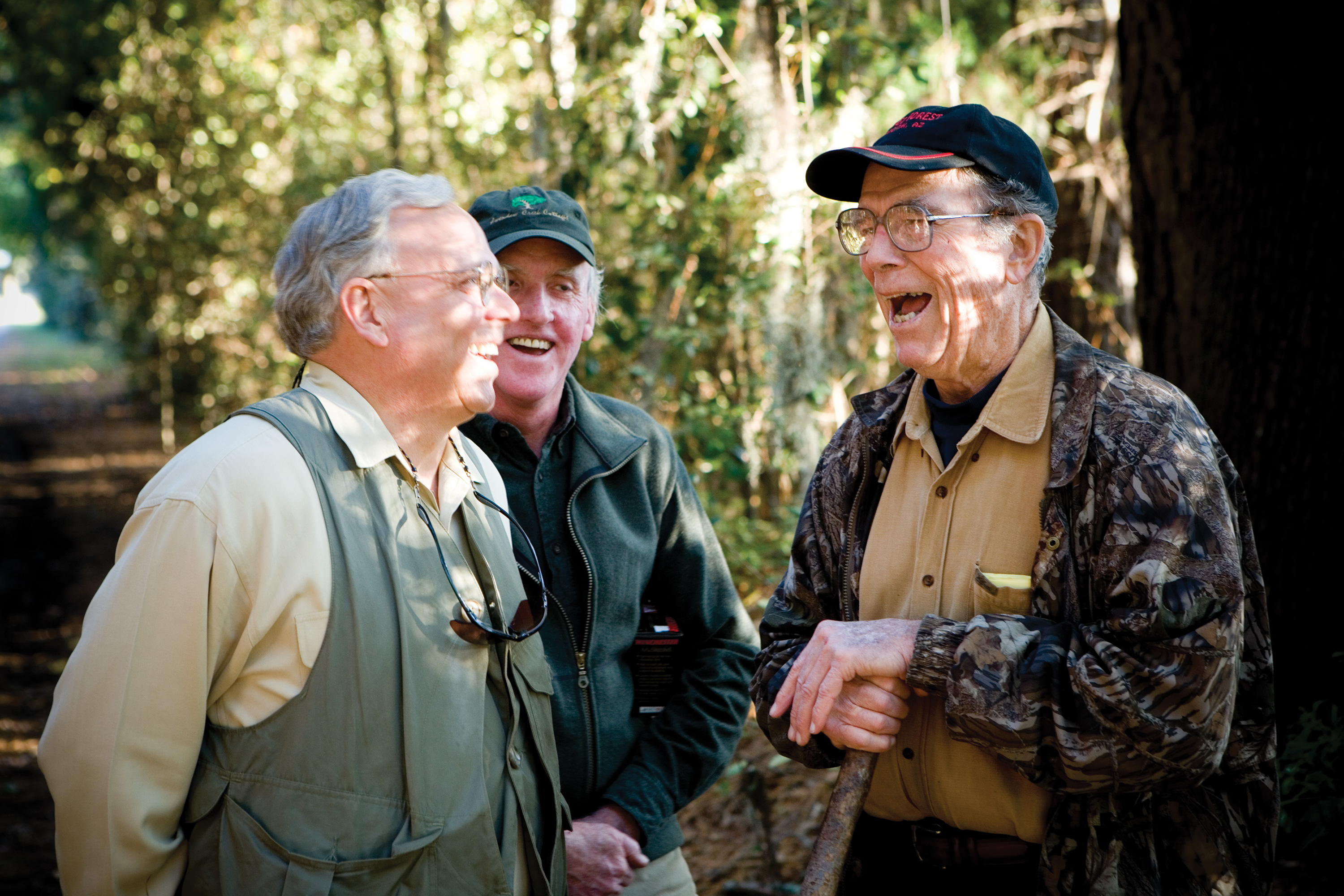
Peter Frank Edwards
Now, Duff’s always had nice things to say about my father’s turkey work, and he claimed that the two of them together had refined the cannon net now used for turkey trapping all over the United States. We’d chatted off and on, and finally I got around to tape recording a couple of hours of turkey trapping reminiscences complete with calls (which are almost ready for release). Duff’s a master turkey caller. I know that’s said of others — of hundreds of gifted others — but, as far as I know, Duff is the only person who’s called a gobbler up close enough for the turkey to be grabbed by the neck. And it was. A rare New Mexican Gould’s turkey. The bird charged angrily into the blind, and Duff’s companion grabbed it. Eight other wildlife biologists were there to serve as witnesses. Validation? Duff received an official reprimand from his Forest Service superior. Doesn’t get any more real than that. But last month when I told that story to an itinerant turkey hunter, he said, “It couldn’t happen.” I said, “It did.” “It couldn’t happen,” he repeats, then leans close into my face and adds, “Don’t make me say the word ‘lie.’” Christ, I thought, why would I want to lie about something like that, or, more exactly, why would Duff want to lie about something like that? “Why would he lie about something like that?” I asked. But apparently that question didn’t even deserve an answer, and we went on to coon hunting and the state of the nation.
Then, last week, Duff said, “Let me take you turkey hunting. I’ve been twice this spring and got two turkeys. I know a place.” I readily agreed. “But don’t say where I took you,” he continued. “If anybody asks, just say Dorchester County.” Dorchester County starts eighty miles from where we stood and covers four thousand square miles. “They’re going to ask you. You wait and see.”
Morning. An hour before newspaper daylight, and we’re in Duff’s truck bumping along a narrow logging road. A major South Carolina river is a mile to our left (I won’t say which river, but Hampton Plantation, past home of the poet laureate and premiere turkey hunter Archibald Rutledge, is several miles to the south). There’s a pale gray suggestion of light, and when the truck stops we’ve got visibility of a hundred feet or so. We’re in a loblolly forest, a regeneration one, but as we follow a sandy fire line trail off towards the river, this gives way to a more mature mixture of towering pines, oaks, and hickories.
“As far as I know, Duff is the only person who’s called a gobbler up close enough for the turkey to be grabbed by the neck. And it was.”
Duff’s come home. Growing up in the mountains of Virginia, he’d lived the woods; he’d hunted, fished, and even run a trap line. A wildlife biologist is what he wanted to be, and fortunately the best training in the nation was right there at Virginia Polytechnic Institute (I know it’s the best — my father went there four years ahead of him). Duff enrolled, but then a detour as a bomber navigator carried him off to Italy. With the war over, he finished up with a Master’s from the University of Wisconsin, took a job in north Georgia, and soon heard of the turkey trapping program proposed for the Francis Marion Forest in South Carolina. He got the job. “You want to keep this job, catch turkeys and deer.” That was the directive in its entirety.
Wild hogs were the problem. Turkeys nest on the ground, and the hogs ate the eggs. Duff ran a twenty-six mile fence around the most likely portion of the forest, trapped off 800 hogs, and after a couple of years began to capture turkeys with a net of thin webbing shot out with a black powder charge. He moved 350 turkeys into the upstate areas, and the birds now found in every South Carolina county, and some in Georgia as well, are descended from those. When I say Duff is home, I mean it as in “where the heart is.”
“A kick out,” he whispers, and nudges the cleared patch of leaves. “And here, the limb, see.” Only afterwards does he explain that, months before, a buck had kicked out a place to pee and then rubbed the scent glands beneath his eye on the low lying limb. I should know that, and maybe I did in some past life. I walk the roads nowadays. I haven’t gone hunting in more than thirty years, and, in addition, I usually read until three in the morning. Since we were leaving at 4:30, I didn’t bother to go to sleep, and am in that critical state of post-unconsciousness enjoyed by many insomniacs: semi-foggy. But lack of sleep is not the true culprit, for true woodcraft involves seeing, hearing, and smelling on a level so well instructed it becomes instinctive. Learning to truly see — learning to involve any and all of our neglected senses — requires a great need (a passion), and while this is true of art or music appreciation and a multitude of other pleasures, I can swear to you that it is the most true of turkey hunting.
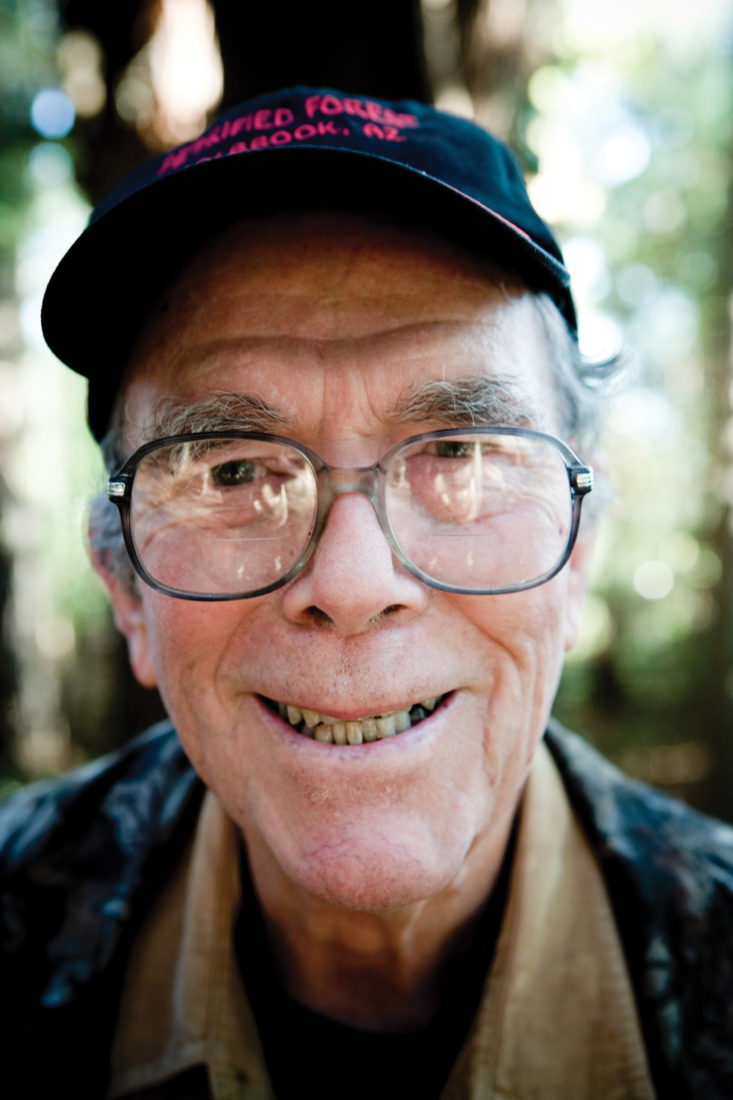
Photo: Peter Frank Edwards
Holbrook
“Here,” he whispers, and with a guiding hand he places me down behind and beneath a fallen post oak. He takes his own position in front and in the open. Lying on his back with only his head and a portion of his shoulders raised, he lays the shotgun out along his legs. I’ve seen photographs of snipers in this position. And as to cover, he’s wearing a camouflage coat and hat, and his body is below the level of the fallen tree trunk. It’s the human silhouette you have to disguise, and the pronounced movements you have to avoid. We wait. A half hour. The sun is rising. Duff holds the wing bone in his mouth and gives a distinct but quiet chirp. Counting his voice, he’s brought five calls, but this wing bone of a hen turkey is his favorite. He waits ten minutes and chirps again. This time an answer comes. A soft and distant gobble. Fifteen minutes. It seems an eternity, but Duff waits it out in complete and motionless silence, and then gives a second quiet chirp. We are the hen turkey, and the distant males are coming down from roosting the night in a tree. As mentioned, hunting turkeys is about misdirection — misdirection and passion. It’s about love, and if Duff answers too quickly, the gobbler would be suspicious. He knows hens. A hundred thousand years of trial and error have brought him to this point. A real flesh-and-blood turkey hen is a sometimey thing.
Gobbles and clucks, gobbles and clucks. Duff switches to a small mouth-held call and gives our flirtatious, fictitious hen a whispered anxiousness. And we hear a rising urgency in the calls of the approaching gobblers. Two gobblers. The males usually travel in pairs so they can best defend their territory and attract females, which they are now hurrying to do. The answering calls are close, a hundred feet or less, and my eyes fasten earnestly upon every branch and shadow. My untutored eyes, it would seem: I have seen nothing, and the hunt is over.
“Well, at least we saw them,” says Duff as he slowly pulls himself upright.
“Saw them?” I question.
“Two young gobblers. They strutted back and forth a couple of times.”
“Here?” I ask, and point off into the woods before us.
“There?” he laughs. “No. Back on the path. They were within range. But just barely. I couldn’t be sure of killing one.”
He’s pointing off at a right angle to where I’d been expecting the birds. More than a right angle — 110 degrees.
In the restaurant the next day, a retired forester — and old Cajun woodsman — asks about our turkey hunt. “Where’d Duff take you?” he asks. “And don’t tell me Dorchester County.”
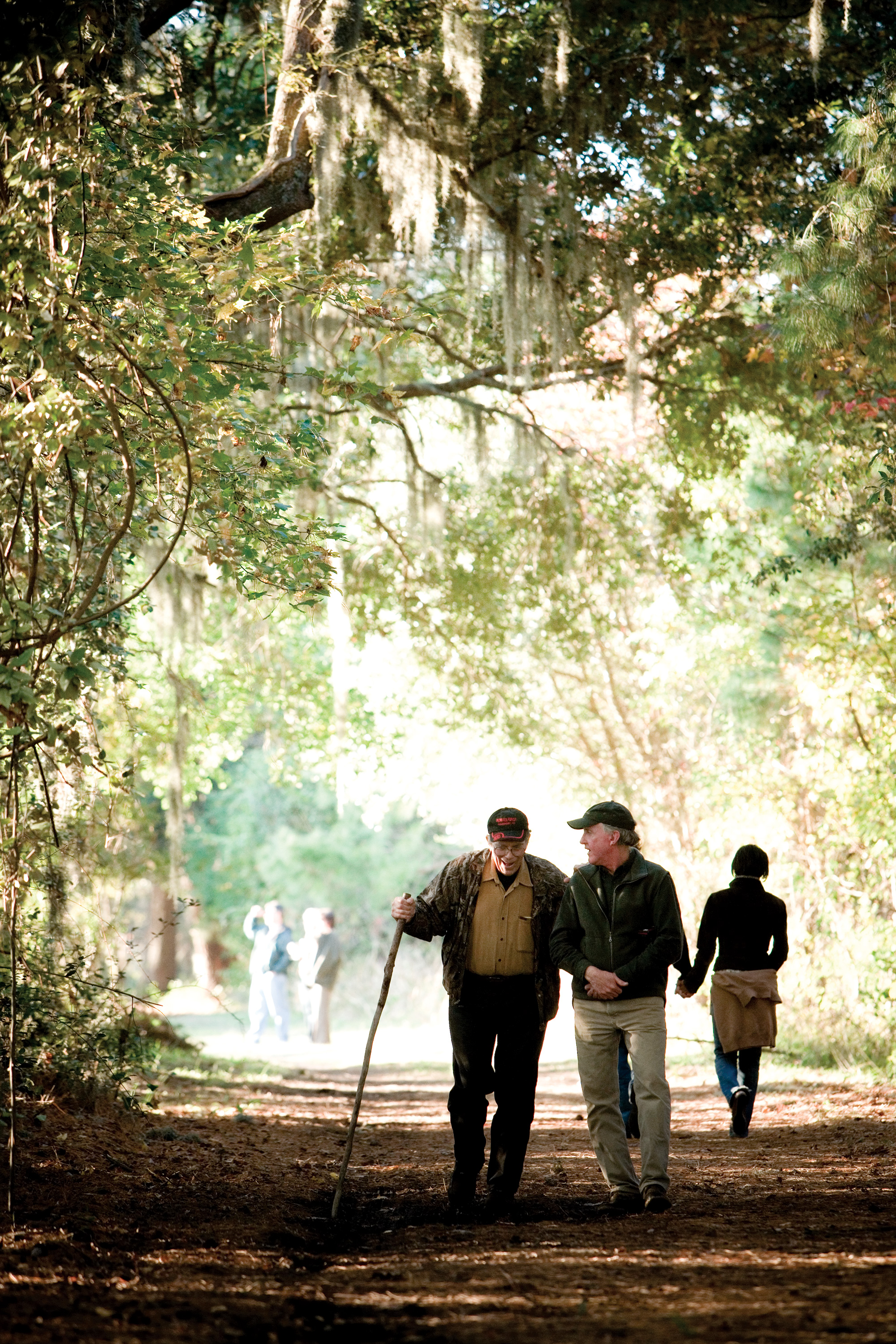
Peter Frank Edwards


